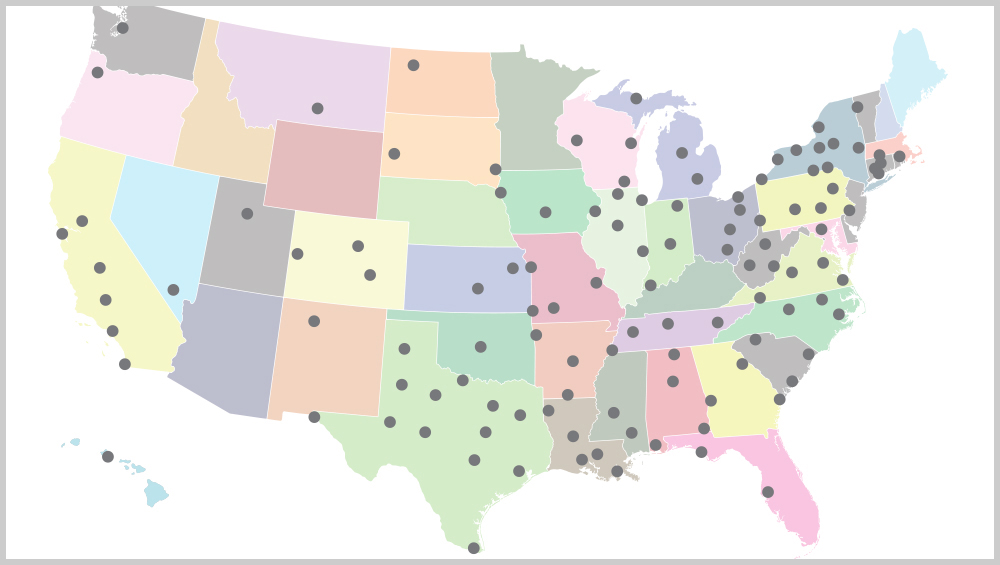
TVN Executive Session | Nexstar: Bigger Scale, More IP Opportunities


Brett Jenkins
As the nation’s largest station group following its acquisition of Tribune Broadcasting, Nexstar Broadcast Group is poised to transition toward more IP workflows, starting with content transport.
Brett Jenkins, the company’s EVP and CTO, now has 197 stations under his purview, and he says creating greater efficiencies by moving file transfers to an IP-based workflow is a priority.
So is capitalizing on the industry’s cooperation on NextGen TV, where he sees Nexstar lighting up its first signals in major markets in the second quarter followed by more markets in the second half of the year. “We look forward to 2020 being a year that a lot of markets start to light up,” Jenkins says.
In an interview with TVNewsCheck’s Jennifer Pallanich, Jenkins talks about integrating the former Tribune stations into Nexstar’s own infrastructure, how the company is leveraging cloud technology to share content between stations and the progress he’s making as the coordinating technologist for local TV’s TIP Initiative on ad technology.
An edited transcript.
Nexstar’s acquisition of Tribune Broadcasting last year increased the company’s station holdings from 115 to 197 and created the largest TV station group ever assembled. What has that meant for your plans as CTO?
We have to take all these television stations we’ve acquired and integrate them into our technology infrastructure as well as the ways we do our business. That means all kinds of things including infrastructure change outs and IT back office change outs. That’s generally the first step. Then, there are places in the workflow where the only way to take advantage of economies of scale is to have everyone on the same system.
We’ll have to take a hard look at each workflow function and each system and then decide. Is this a system where the company can benefit from having everyone on the same platform? There may be functions where we have enough interoperability that standardization doesn’t matter.
Do you see potential for hubbing tasks like playout or graphics creation all in one location?
We already hub parts of the workflow. We’ve long operated master control automation hubs, and we have other pockets for hubbing. We try to allow stations to focus on the things that only the stations can do — and can do well — which is generate great local content. Other things are not as focused on the creative aspect or storytelling or reporting, but they have to get done.
If we can do that efficiently with a hub or in a centralized location, we do that. Both Tribune and Nexstar had a practice of hubbing some operations before the merger, so that’s not a huge change in operating philosophy for either company.
Are there opportunities to move some parts of the workflow to IP and cloud-based technologies as you plan operations and investments for this very large group?
There are definitely major opportunities to transition more toward IP workflows. As we look at making an investment where we potentially replace a system, we are looking to move the technology forward. Moving content around is a big area where IP workflows and technologies can make a really big difference, and that’s a large part of the workflow of a station’s operations. Just transporting these assets around can be a chore. It can eat into efficiencies.
What we try to do is allow our newsroom people and journalists to be producing content, not waiting around for files to transfer between systems. The more efficient we can make those transfers and the flow and get assets moving quickly through the newsroom, the more productive our people are. That allows them to focus on what we want them to do — generate and create best in class content and reporting on local news. So, the more you can work those workflows on IP, the better off you are. We are continuing to invest in those systems.
There are other areas, like IP production technology, that’s more forward-looking in terms of return. It has a lot of promise to allow flexibility in production, to be able to change things on the fly and not have these pre-configured things you can do inside production. That’s another area we focus on, but that’s a little more forward looking compared to what I consider to be moving the content around, which is high bang for the buck.
We already have some workflows in the cloud, largely with respect to newsgathering in the field and transport of the content back to the station, and we’re leveraging cloud technology to share content between station groups.
We have so many stations producing fantastic content, and the ability to share that content can be really important. That’s an area where cloud-based technologies and IP workflows can enable that to happen a lot more quickly now than even a couple of years ago.
For example, we are working closely with Latakoo to bring some of those workflows to fruition. These are areas where we think we will see very significant efficiency gains in being able to gather more content or better content so the overall workflow is faster. We’re pleased with the way those tests and trials are going, and we’re building out those capabilities.
On the NextGen TV (ATSC 3.0) front, are any of your stations planning to light up NextGen TV signals in 2020?
Yes. We have taken up leadership in a number of technical areas, including the ATSC 3.0 launch, and we are active in standards bodies and other industry groups. We are working toward getting a few of those good-size markets on the air, hopefully in the second quarter of 2020, and we have more that we’re looking to transition in the back half of 2020.
ATSC 3.0 market conversions happen best when there’s broad industry cooperation. We have been working with other broadcasters in those markets. We’re pleased with the progress over the last couple of years. Everybody in the industry is onboard about getting markets transitioned. We look forward to 2020 being a year that a lot of markets start to light up.
What are your thoughts on NextGen TV’s prospects in terms of consumer adoption and a full realization of the standard in the marketplace?
At CES, a number of manufacturers announced 3.0-capable sets will be in stores in 2020. That’s fantastic. I think all the broadcasters are feeling good about the progress being made on the consumer electronics side. It’s an indicator that this is looking like it’s going to be a good consumer success.
Within Pearl TV, we’ve done a lot of consumer research and testing. We’re seeing consumer interest in the capabilities that NextGen TV brings in terms of picture quality and enhancements to audio. We’re feeling really good about consumer acceptance and adoption. We just have to get through the next couple of years of getting the markets lit up.
We are also interested in the tangible benefits that NextGen TV is going to bring in terms of broadcast distribution. The signal is easy to receive, there’s more capacity and there’s the ability to do more with the spectrum.
You are the coordinating technologist for local TV’s TIP Initiative, which is setting the protocols for local TV ad sales automation. Is that process moving as quickly as the industry needs it to move?
We have been leading the industry around sales automation and how to better automate sales using technology. We’ve made a tremendous amount of progress within the TIP initiative over the past year.
Toward the end of 2019, we saw system providers successfully deploy the first TIP interfaces we published within the industry. We’ve seen widespread deployment of first interface, with adoption and support across more and more broadcasters who recognize the value of what we’re doing. They are coming on board to help with the efforts.
We’re seeing good adoption on the agency side, with them wanting broadcasters to get more serious about automating and providing simpler mechanisms for us to do business with our agency partners.
We’ll see more and more adoption of additional interfaces that TIP has published. We’re seeing lots of vendors on the buy and sell side adopt these and start working together on really implementing them.
I hope that 2020 becomes the year we see more adoptions and that buyers and sellers start to realize the benefits of automating in terms of the efficiencies we all gain, and local broadcast spots become more attractive because they become simpler to buy.
We have heard that one of the things slowing this transition down is not all providers are connected yet via API. Is this an issue?
When we started the TIP initiative, the goal was to implement these interfaces and drive toward API adoption. API is a modernized way for computer systems to talk to each other and keep human interaction to a minimum. That said, when you look at what we published in the TIP standards, they lend themselves to data exchange, which doesn’t have to be API. The move of various vendors to APIs has maybe been slower than we’d like to see.
Vendors, even if they have not implemented interfaces as full API, are still seeing benefits of having the formats to follow. We’re starting to see adoption of standardized data structure on both sides. It’s easier to start exchanging files than build full-fledged APIs. That said, all the providers we talked to want to eventually move to API. It’s just going to take a little time to get there.

































Comments (0)